When I started my research for this review, I was not necessarily surprised to see that everyone had already formed some strong opinions on Prime Video’s Daisy Jones & The Six (from Vulture: “Watching Daisy Jones & The Six is a bit like buying a Fleetwood Mac T-shirt from Urban Outfitters” / from Pitchfork: “The soundtrack… ends up sounding like a Broadway tribute”). The adaption of Taylor Jenkins Reid’s 2019 bestselling novel was pretty much guaranteed to spark clickbaity takes. For what it’s worth, I love both faux vintage band shirts and Broadway soundtracks, so Daisy Jones & the Six is extremely up my alley, even by the measurements of its harshest critics.
What I was surprised by, however, was how queer and Black the show ended up being when I least expected it.
Developed by (500) Days of Summer’s Scott Neustadter and Michael H. Webber, Daisy Jones admittedly does have a bit of an artificial sheen to it; if you’re looking for a raw depiction of 1970s rock, this is most certainly not it. But if you enjoy listening to Stevie Nicks while drinking white wine with smokey eyeshadow and caftans during July sunsets, I think you’ll find yourself at home in this fictionalized take on the rise and fall of Fleetwod Mac.
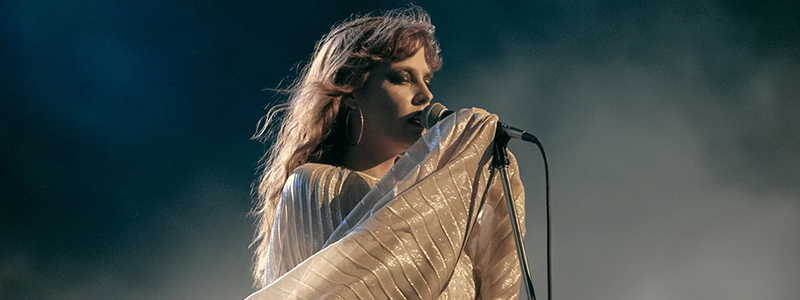
Daisy Jones uses a documentary-style narration to tell the story of the band, who became larger than life in the 1970s and promptly broke up after their singular record-breaking album and sold out national tour. In the 1990s, an off-screen filmmaker tries to understand what happened 20 years ago using on-camera interviews with the former band members. In practice, I found the framing device flattening and cheap. It comes across as a VH1 Behind the Music that you could’ve sworn you’ve seen that one time, but can’t quite put your finger on.
But there are cast members who transcend Daisy Jones’ narrative limitations. Namely, I haven’t been able to take my eyes off of Riley Keough as Daisy. And yes, I shouldn’t have necessarily been surprised to find out that she’s a nepo baby — Riley is Elvis’ granddaughter, if that didn’t ping for you right away — but as a Stevie Nicks stand in, she captivates. Does Daisy comes across as some sort of manic pixie soft-rock girl? Sure does! But Keogh at the helm, it’s hard to turn away.
Daisy’s best friend, Simone (Nabiyah Be), is the resident gay. The roommates are both trying to break in as singers, sharing a small Los Angeles apartment and spending their evenings watching TV on a tiny couch. At an industry party, Daisy catches Simone looking at Bernie (Ayesha Harris) across a patio. Simone, closeted, makes her way to Bernie and casually, not to draw any unwanted attention, Bernie pretty much hits on her right away.
Simone gets flustered and Bernie asks, “I’m sorry, did I read you wrong?”
Bernie is a 1970s stud in the finest form. All eyelashes and a buttery voice that could make any femme blush. Simone never stood a chance.
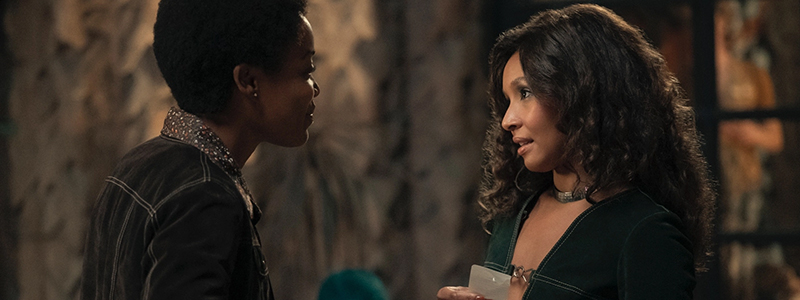
Bernie gives Simone a card to look her up in New York — where she promises that the club scene is much more open for people like them than what Simone will find in LA.
Simone leaves for NYC, in part at Daisy’s urging, early in the series. Daisy knew that her best friend could not find what she needed in Los Angeles. While I applauded Daisy’s uncharacteristic selflessness, as Daisy Jones continued, I’d resided myself to the fact that Simone had been written off entirely. I’m glad that I stuck around, because the return to Simone, this time as her own entity, wrapped up in her own unique Blackness and queerness, was well worth it.
Simone Jackson’s actually not gay in the original Daisy Jones & The Six novel. Though the book is written by Taylor Jenkins Reid, the same writer who wrote the incredibly popular and gay The Seven Husbands of Evelyn Hugo. and was adapted for the screen by Riese Witherspoon’s Hello Sunshine production company — who also eloquently added queer storylines in its novel-to-screen adaption of Little Fires Everywhere for Hulu. And while not directly related to Simone’s storyline, noted bisexual Phoebe Bridgers is listed among the artists who helped bring Daisy’s music to life. Which is to say that while there are echoes of queerness throughout the production if you know where to look, the way Daisy Jones sharply comes into focus during last week’s “Track 7: She’s Gone” — where we finally pick up with Simone, now living in New York with Bernie — was such an unexpected delight.
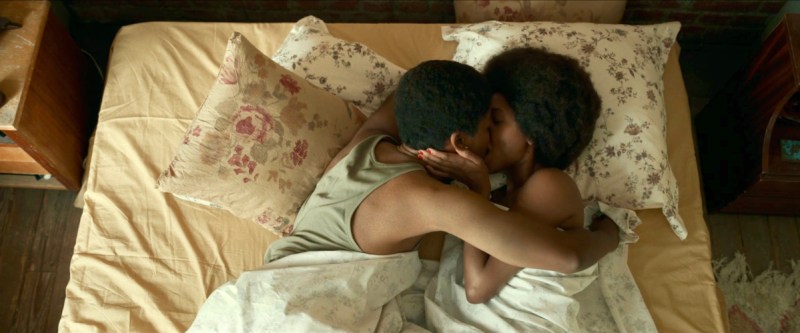
Significantly, the picking back up of Simone’s chapter does not just separate the audience away from the rest of the (up to now, majority white) cast and into her own world — but also it dovetails with Daisy Jones & The Six’s departure from rock and into a brief, but poignant, exploration of disco. Dr. Jafari S. Allen, author of There’s a Disco Ball Between Us: A Theory of Black Gay Life, put it best: “The significance of the disco— the club or the bar — for Black gay communion… cannot be overstated, any more than can the centrality of the Black Christian church in the United States’ long civil rights movement.”
And so it’s fitting that it’s here, away from the whitewashed desert folk rock scene that had regulated her to a side character in Daisy’s chaos, and music producers that did not recognize what made her special, that Simone falls in love.
Of course, disco itself is often whitewashed and straight-washed, which has been written about with more frequency lately, especially within queer communities, but is always worth repeating. The genre became synonymous with John Travolta’s white polyester suit on the cover of Saturday Night Fever when in reality disco sprouted from an overlapping mosaic of working class, gay, Black and brown communities. A flashpoint that’s as ephemeral as it is long-lasting.
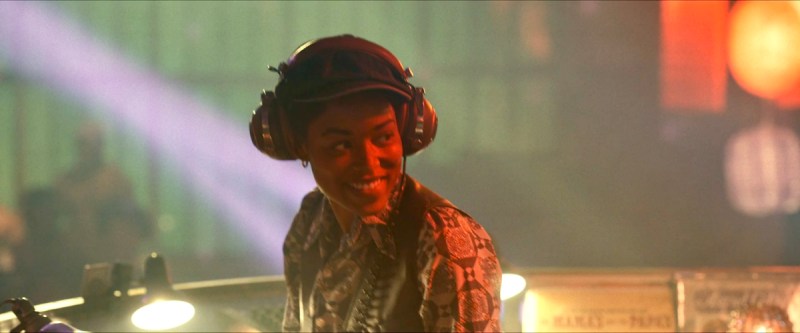
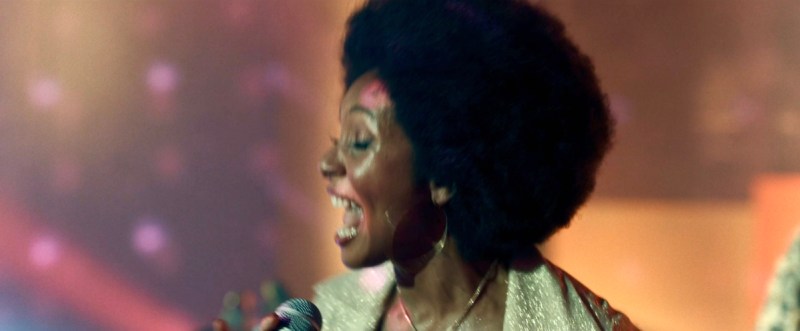
In New York City, where Simone finds herself after that multiple days long bus trip from Los Angeles, disco meant clubs like The Loft and The Sanctuary, which was housed in a former German Baptist church in midtown Manhattan. In describing The Sanctuary to the Village Voice over 20 years after its height, model Leigh Lee recalled, “it was supposed to be a secret, but I don’t know how secret it could have been when faggots and lesbians came out of church from midnight till sunrise.”
The addictive rapture, the pure gratification, of disco came from being around your own people, intertwined and sweaty, a dance floor that post-Stonewall was no longer restricted to straight couples (as if it ever was really theirs in the first place). DJ/producer Nicky Siano, who founded Manhattan’s The Gallery — where Grace Jones first debuted — said it succinctly, the club “becomes divine: a love epidemic.”
Or to quote Bernie, holding Simone’s hand while Simone’s hair is wrapped up, the two of them tucked in close together, safe, on Bernie’s sun drenched couch the morning after Simone had pulled away from her while the couple was perched on Bernie’s DJ stand and the crowd pulsed in unison to Simone’s voice through the speakers: “There’s always going to be somewhere where we have to be careful. But in the club, with our people? Baby.. c’mon. If we can’t dance there, where can we?”
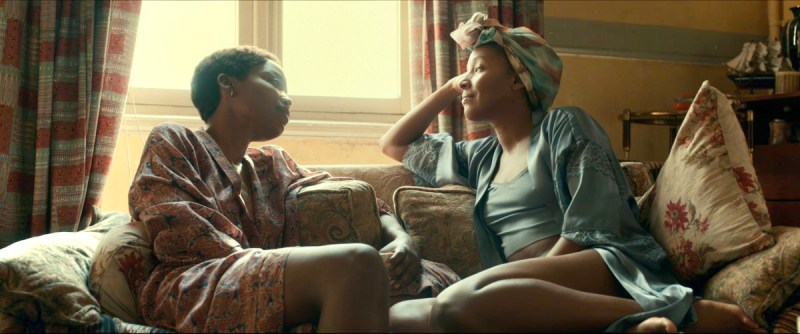
Looking back on that time in her life from the 90s, directly to the camera, Simone notes that Bernie was right. She knew she was hiding. And she wasn’t ready to stop, so instead she put everything she was feeling into her music. Over the next few years, with Bernie as her producer, Simone becomes a Donna Summer-esque pioneer in disco. Together they become something of a queer power couple in the club scene in NYC and New Jersey, Simone crooning about being “a diamond under pressure” over synthesized beats as Bernie conducts her turntables like they were an orchestra.
But no matter where they went at the height of Simone’s fame, they always returned back to the same Black queer club where they started: “They knew what the song was really about.”
The Black, brown, queer patrons of clubs in New York, Philadelphia, Chicago weren’t the only people who understood the power embedded in whom disco was really for. As the 1970s waned, disco found itself squarely in the crosshairs of a culture war for the burgeoning conservatism in the decade to come.
Chicago radio DJ Steve Dahl, who had been fired from his job at WDAI Chicago when the station made the switch to disco, became a loud voice the months leading up the infamous “Disco Demolition Night” protest. Dahl, who was only 24 year old at the time, noted that he didn’t feel “at home” in disco. And that was the whole thing, right? That it didn’t center white men like him. Dahl gathered over 50,000 people in White Sox Stadium on July 12, 1979. The crowd chanting “disco sucks” while tearing and burning records, before the event quickly turned violent, with 39 arrests before the night was over.
The cultural impact of the night’s long shadow still lives with us, much like disco itself. And here again we return to Dr. Allen:
“When they said ‘disco sucks’ — including the ‘Disco Demolition Night’ mob scaling the walls of their own treasured institution, Chicago ’s Comiskey Park, to blow up a crate of records on July 12, 1979 — they were (are) really saying: ‘Shut the fuck up already!’ ‘Go back where you came from!’ ‘All lives matter!’ They were trying to ‘make America great again’ and ‘stop the steal’ (of popular music and culture).”
Simone hasn’t had to deal with Disco Demolition Night and its aftermath — or at least, not yet, the final two episodes of Daisy and The Six drop this weekend on Prime Video, so we will see what happens. For now, she’s wrapped up Bernie, empowered in the little slice of queer utopia that they have found between beats and underneath the hot lights of dingy clubs and glittering disco balls.
When Daisy telegraphs her urgently about an emergency that means Simone has to travel to Greece (long story, but if you know Daisy, you already know that wherever she flutters, mayhem reigns), Simone doesn’t bat an eye before uprooting the safety of the life she’s built for herself once more. Except this time, something is different. This time Bernie opens up a suitcase right alongside her.
Whatever comes next, Simone won’t face it alone.
More Reading (and Listening!)
When I began this article, I had a sense of what I wanted to talk about, but I had no idea that I would spend the next two days in a deep dive on Blackness, queerness, and disco. But I’m so grateful that I did. In case you’re the kind of nerd who enjoys extra homework, may I suggest:
- Disco: Past & Present (with The Clive Davis Institute’s Jason King) by DJ Louie XIV of the Pop Pantheon Podcast
- There’s a Disco Ball Between Us: A Theory of Black Gay Life by Dr. Jafari S Allen (and also by Dr. Allen, Until We Meet on the Dance Floor Again: A Playlist — an article that is directly cited in this piece multiple times)
- The Last Days of Gay Disco by Peter Braunstein for the Village Voice, also cited in this piece
- The Night Disco Died | The Racist & Homophobic “End” to Disco by Blk Girl Culture (once again, cited in this piece!)



disco is truly one of my favorite black queer things. thanks for the show rec!
I won’t lie, you do have to stick it out a bit to get to the disco parts. But I was really delighted by what we got once it came.
I really can’t say enough about how big the gap is between how much I loved Simone’s storyline and (I’m sorry!) how much I hated everything else about this show. the love story with her and Bernie and their music was such a joy to watch, but every other character is a hot mess and the production/writing on the show is so cringe. truly someone should recut the show on youtube or something to make Simone the protagonist — or like, make S2 about Simone lol. but thank you for this article! I didn’t know basically anything about disco, and I really appreciate this deep dive
There’s already some supercuts of Simone and Bernie floating around online!! I’m glad people have zeroed in on them, because I agree they are a real highlight. (I’ve enjoyed the show overall, but definitely very clear-eyed that it’s ummm… uneven? to put it kindly)
This show wasn’t on my radar at all. I appreciate this review for making me more interested in watching. And God bless that reading list. It’s so good. I’ve already saved the playlist.
Oh that’s awesome!
i’m excited to dive further into your research Carmen! yay!
Nerd to nerd, salute!
Wow!! I was already kind of curious about this show as someone who did watch that one fleetwood mac vh1 documentary but this is definitely something to actually make me follow through. I am happily surprised to hear about this storyline. And thank you for the extended reading list, as someone who loves disco and wants to learn more about its origins.
hahaaaaaa truly so many vh1 documentaries were watched in my living room, so many bagel bites eaten while laying upside down on my couch
My local antique store just posted that they are selling the exact same luggage that was used in this show, and at the time I hadn’t heard about this show. Now that I know it is queer, I will have to watch it and then go see if the luggage set is still in stock!
I was hoping someone might’ve provided timestamps for the scene because sitting through this white cishet mediocrity is testing my patience!
I wish I had taken more precise notes!! (I usually do, but since I knew this review would be taking more of a “big picture” approach, I didn’t this go round). However —
Simone and Bernie meet in episode 3 at the industry party, and Simone makes the decision to move to NYC in episode 4. You can theoretically fast forward on these episodes and stop whenever you see Simone’s face. From there (if you’re only interested the Simone parts), you can go straight to episode 7 — which is the Very Special Gay episode, I recommend watching this episode in its entirety. Then you skip forward to the finale (episode 10), and once Simone shows up (about halfway through?) she’s weaved throughout until the end. So you could fast forward until you see her and then stay until the end from there.
I make no promises that the rest of the story will or won’t stop making sense with this approach!! But Simone’s arc is fairly self-contained to Bernie and her friendship with Daisy, so if you watch it this way, you will keep all of Simone’s arc and the Black/queer parts intact.
Thank you, Carmen!
You had me at Queer and Black! We can’t get enough of that on screen and makes me feel better about my prime membership. Because we all know planet amazon is coming. But hey Harlem and shows like this helps to distract me from the thought of that lol :)
Thank you so much for this review and additional reading list! I immediately wanted to learn more about the history of disco after finishing this series!
Buy a driver’s license for all EU zone countries Driver’s license test. Driver’s license test is always a very difficult task for most people. This is due to the tense nature of the theoretical driver’s license test and the practical driver’s license test. However, we will provide you with a driver’s license without you having to take a driver’s license test. In this way, we save a lot of money and time. Because attending driving school costs a lot of money and time. We can provide a driver’s license for people who can drive but don’t have time for an exam. We also provide for people who can’t drive. We can help you to pass both the practical and theoretical diving certification within a few working days and help you to get a real and registered driver’s license that you do not have to stress yourself writing difficult exams and spending so much time and money.
køb kørekort
https://kbregistreretkrekort.com/
https://
kørekort online
.com/